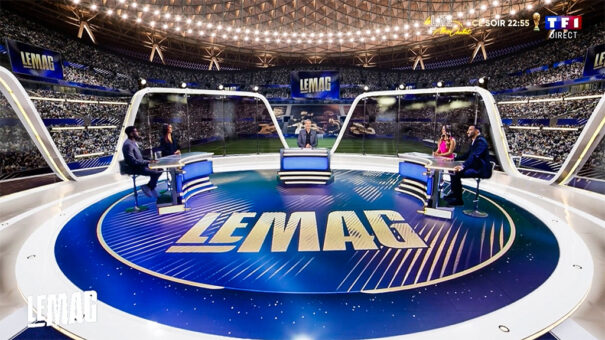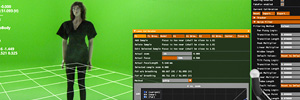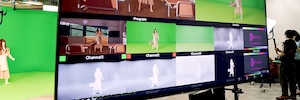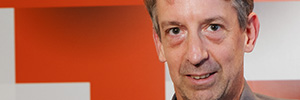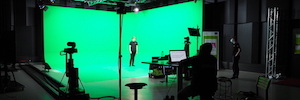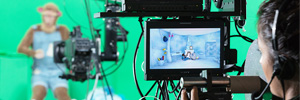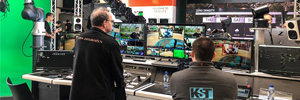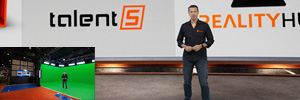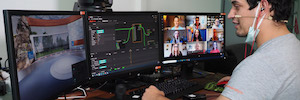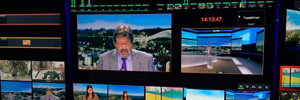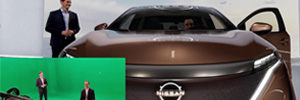TF1, RTBF and RTV SLO covered Qatar 2022 from virtual sets with Zero Density
The virtual studios generated with Zero Density’s Reality Engine enabled broadcasters such as TF1, RTBF, RTV SLO, Alkass, ICE TV, Astro and Asharq News to expand their possibilities for coverage of the Qatar 2022 World Cup.
TF1, used to hybrid virtual studios, once again relied on Zero Density’s Reality technology to enhance the coverage of the Le Mag format. For this project, the French broadcaster partnered with Kennedy Agency for the design of the graphics package and DreamWall for the integration and configuration of Reality. This joint effort resulted in the construction of a virtual balcony on the edge of a stadium, from where commentators could comment on line-ups or tactics. The staging was completed with the Flycam function, which allows for 360-degree visual narration.
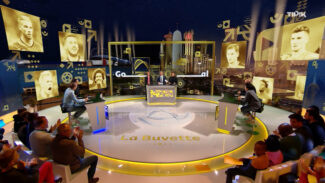 In addition, the Belgian broadcaster RTBF provided seven and a half hours of daily coverage from a virtual studio consisting of an LED screen flanked by two green chroma walls. DreamWall was again responsible for this integration, which was powered by three Reality engines and two ReAmpere workstations. Thanks to this set-up, the Belgian broadcaster was able to place the presenters on a photorealistic rooftop in Qatar, with different lighting to represent day, evening and night. Similarly, the virtual camera allowed RTBF to move from the studio to the stadium, offering recreations of Doha’s eight football stadiums.
In addition, the Belgian broadcaster RTBF provided seven and a half hours of daily coverage from a virtual studio consisting of an LED screen flanked by two green chroma walls. DreamWall was again responsible for this integration, which was powered by three Reality engines and two ReAmpere workstations. Thanks to this set-up, the Belgian broadcaster was able to place the presenters on a photorealistic rooftop in Qatar, with different lighting to represent day, evening and night. Similarly, the virtual camera allowed RTBF to move from the studio to the stadium, offering recreations of Doha’s eight football stadiums.
Augmented reality elements were also used to display scores, statistics and dynamic line-ups, and several players were teleported for live interviews.
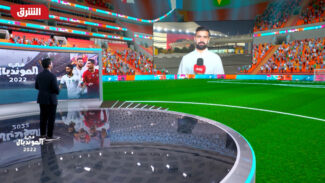 RTVE SLO, Asharq News, ICE TV, Astro and Alkass
RTVE SLO, Asharq News, ICE TV, Astro and Alkass
Slovak broadcaster RTV SLO made its debut with augmented reality ecosystems for Qatar 2022. RTV SLO’s 80 m2 U-shaped set was extended with an additional studio that provided more space for the presenter to move around more freely and provide all the key facts about the Qatar 2022 World Cup. RTV SLO operated daily with three cameras, each connected to a Reality Engine. All of them were coordinated with RealityHub to feed all graphics, based on Unreal Engine. The shape and colour space conversions of this workflow were handled by Reality Keyer.
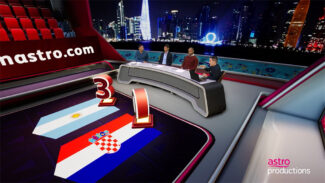 Asharq News, on the other hand, decided to squeeze Reality Engine to allow its presenters to stand in the middle of a giant virtual football stadium, with virtual fans cheering to bring the space to life. This environment was complemented by a large virtual video screen that was used to show relevant footage from the matches. ICE TV in the Maldives decided to go one step further: in addition to creating a virtual set to complement its programming, the television station decided to design a virtual table for the presenters. Astro (Malaysia) used three Reality Engines to power its set, designed by Astro’s in-house design and motion department.
Asharq News, on the other hand, decided to squeeze Reality Engine to allow its presenters to stand in the middle of a giant virtual football stadium, with virtual fans cheering to bring the space to life. This environment was complemented by a large virtual video screen that was used to show relevant footage from the matches. ICE TV in the Maldives decided to go one step further: in addition to creating a virtual set to complement its programming, the television station decided to design a virtual table for the presenters. Astro (Malaysia) used three Reality Engines to power its set, designed by Astro’s in-house design and motion department.
Finally, Qatar’s Alkass Sports Channels took advantage of four Reality Engines to build a virtual set that would mutate through multiple designs. The Alkass team also took advantage of the Reality Engine’s capabilities to teleport different guests into the studio live.
¿Te gustó este artículo?
Suscríbete a nuestro RSS feed y no te perderás nada.



